Match Column -I with column-II and select the CORRECT option from the codes given below .
Column - IColumn - II(P) Autopolypoidy(i)2n+1(Q) Trisomy(ii)AAAA(R) Allopolyploidy(iii)AABB(S) Nullisomy(iv)2n−2
P-(ii), Q-(i), R-(iii), S-(iv)
P-(iv), Q-(i), R-(ii), S-(iii)
P-(ii), Q-(iv), R-(iii), S-(i)
P-(ii), Q-(i), R-(iv), S-(iii)
The correct Answer is:A
To solve the question of matching Column-I with Column-II, we will analyze each term in Column-I and find its correct match in Column-II.
Step 1: Analyze Autopolyploidy (P)
- Definition: Autopolyploidy refers to a condition where an organism has more than two sets of chromosomes that are all from the same species.
- Match: This condition is represented as "AAAA" or "2n" where n is the number of chromosomes. Since it involves multiple sets of the same genome, it can be represented as 4n (for example, 4 sets of chromosomes).
- Conclusion: Match (P) Autopolyploidy with (ii) "AAAA".
Step 2: Analyze Trisomy (Q)
- Definition: Trisomy is a chromosomal disorder where there is one extra chromosome, leading to a total of 47 chromosomes instead of the normal 46.
- Match: This can be represented as "2n + 1", where n is the haploid number of chromosomes. For humans, n = 23, so 2n = 46 and 2n + 1 = 47.
- Conclusion: Match (Q) Trisomy with (i) 2n + 1.
Step 3: Analyze Allopolyploidy (R)
- Definition: Allopolyploidy refers to a condition where an organism has more than two sets of chromosomes derived from different species.
- Match: This condition is represented as "AABB", indicating two different sets of chromosomes from two different species.
- Conclusion: Match (R) Allopolyploidy with (iii) "AABB".
Step 4: Analyze Nullisomy (S)
- Definition: Nullisomy is a condition where a complete pair of homologous chromosomes is missing, resulting in a loss of two chromosomes.
- Match: This can be represented as "2n - 2", where two chromosomes are absent from the normal diploid set.
- Conclusion: Match (S) Nullisomy with (iv) 2n - 2.
Final Matches
- (P) Autopolyploidy → (ii) "AAAA"
- (Q) Trisomy → (i) 2n + 1
- (R) Allopolyploidy → (iii) "AABB"
- (S) Nullisomy → (iv) 2n - 2
Summary of Correct Matches
- P → ii
- Q → i
- R → iii
- S → iv
- Definition: Autopolyploidy refers to a condition where an organism has more than two sets of chromosomes that are all from the same species.
- Match: This condition is represented as "AAAA" or "2n" where n is the number of chromosomes. Since it involves multiple sets of the same genome, it can be represented as 4n (for example, 4 sets of chromosomes).
- Conclusion: Match (P) Autopolyploidy with (ii) "AAAA".
- Definition: Trisomy is a chromosomal disorder where there is one extra chromosome, leading to a total of 47 chromosomes instead of the normal 46.
- Match: This can be represented as "2n + 1", where n is the haploid number of chromosomes. For humans, n = 23, so 2n = 46 and 2n + 1 = 47.
- Conclusion: Match (Q) Trisomy with (i) 2n + 1.
- Definition: Allopolyploidy refers to a condition where an organism has more than two sets of chromosomes derived from different species.
- Match: This condition is represented as "AABB", indicating two different sets of chromosomes from two different species.
- Conclusion: Match (R) Allopolyploidy with (iii) "AABB".
- Definition: Nullisomy is a condition where a complete pair of homologous chromosomes is missing, resulting in a loss of two chromosomes.
- Match: This can be represented as "2n - 2", where two chromosomes are absent from the normal diploid set.
- Conclusion: Match (S) Nullisomy with (iv) 2n - 2.
- (P) Autopolyploidy → (ii) "AAAA"
- (Q) Trisomy → (i) 2n + 1
- (R) Allopolyploidy → (iii) "AABB"
- (S) Nullisomy → (iv) 2n - 2
- P → ii
- Q → i
- R → iii
- S → iv
Similar Questions
Match Column - I with Column - II and select the CORRECT option form the codes given below
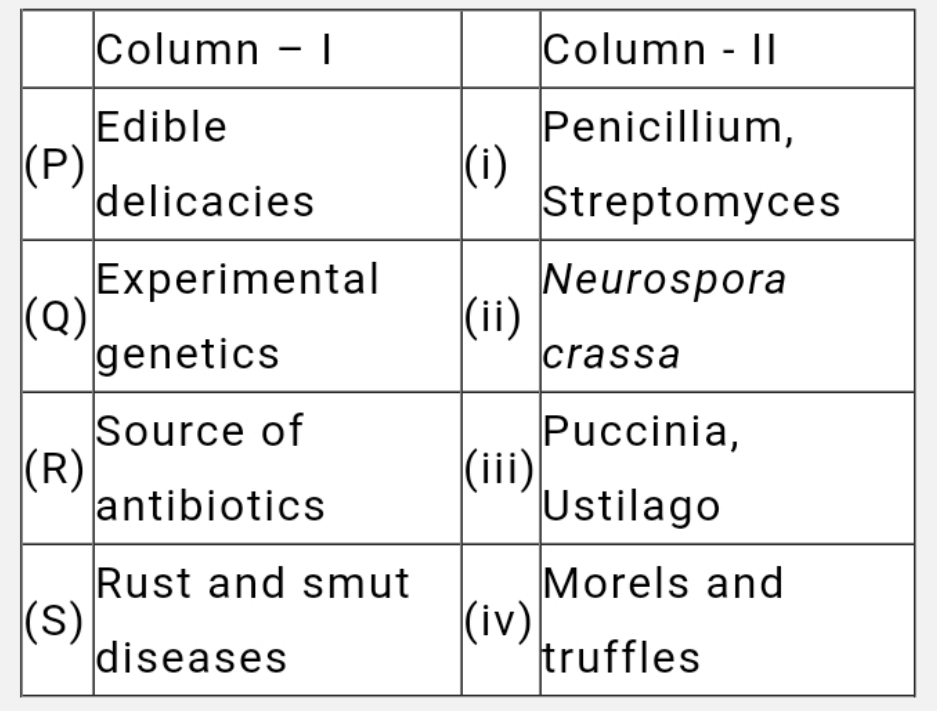
View SolutionMatch Column - I with Column - II and select the CORRECT option form the codes given below
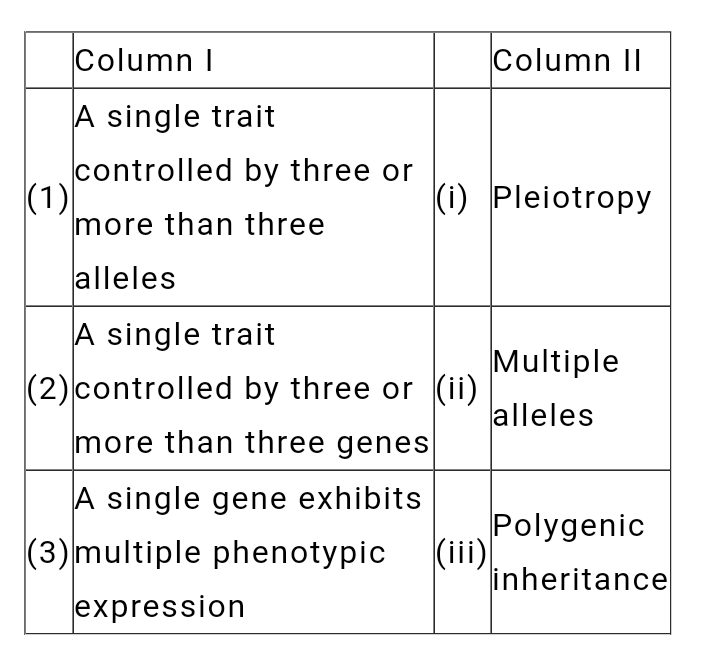
View SolutionMatch Column-I with Column-II and select the correct option using the codes given below
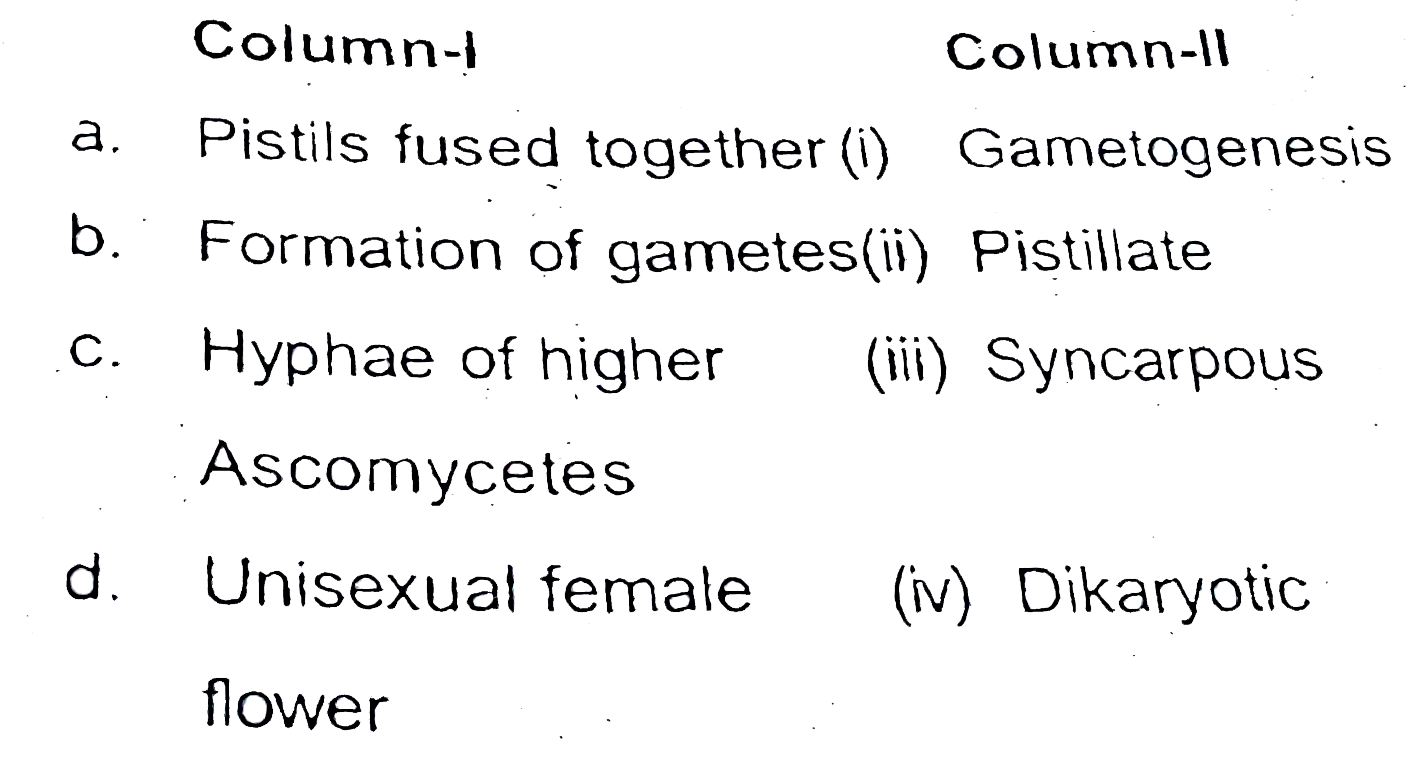
View SolutionMatch Column I with Column II and select correct option from the codes given below.
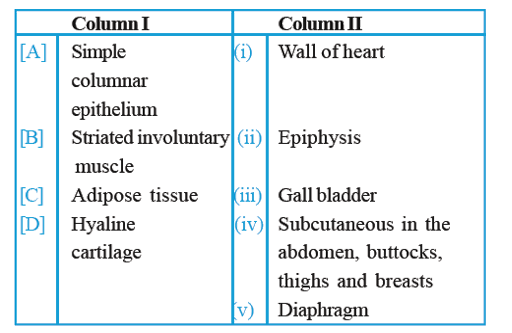
View SolutionMatch Column-I with Column-II and select the correct option using the codes given below.
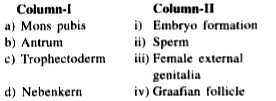
View SolutionMatch Column-I with Column -II and select the correct option using the codes given below
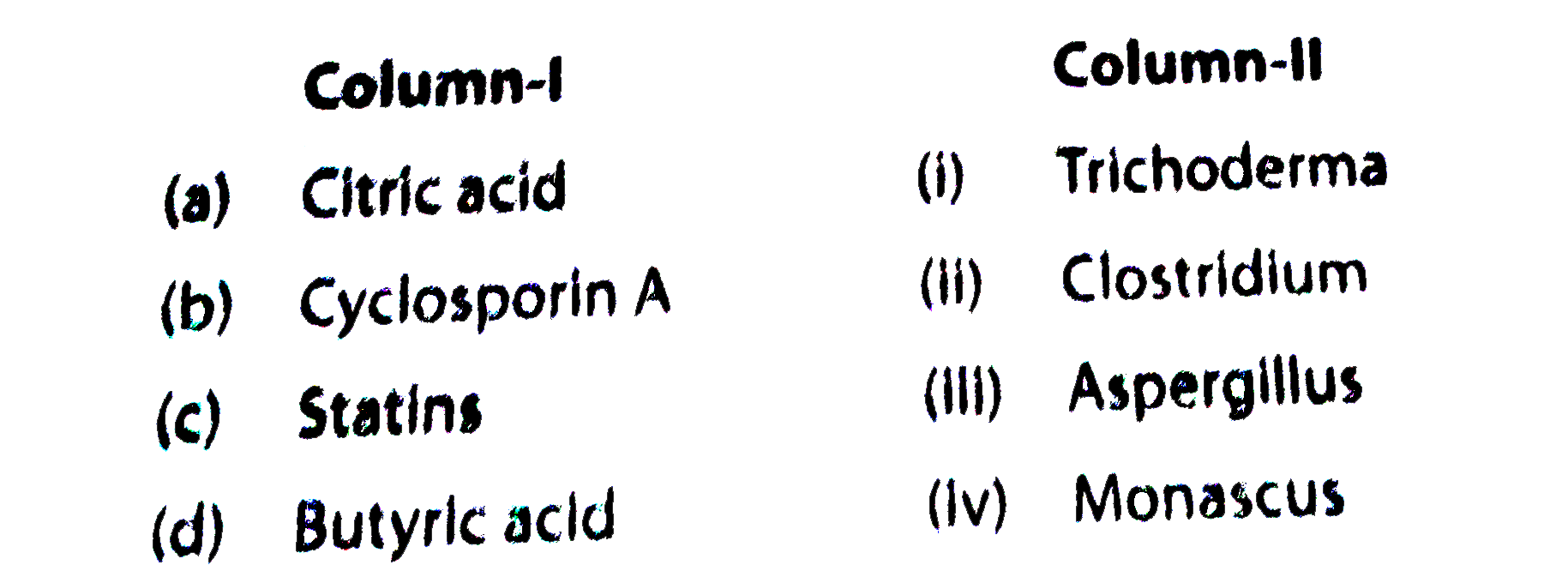
View SolutionMatch Column-I with Column-II and select the correct answer from the codes given below. :-
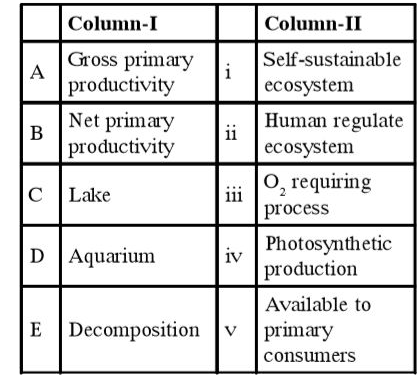
View SolutionMatch column I with column II and select the correct option using the codes given below:
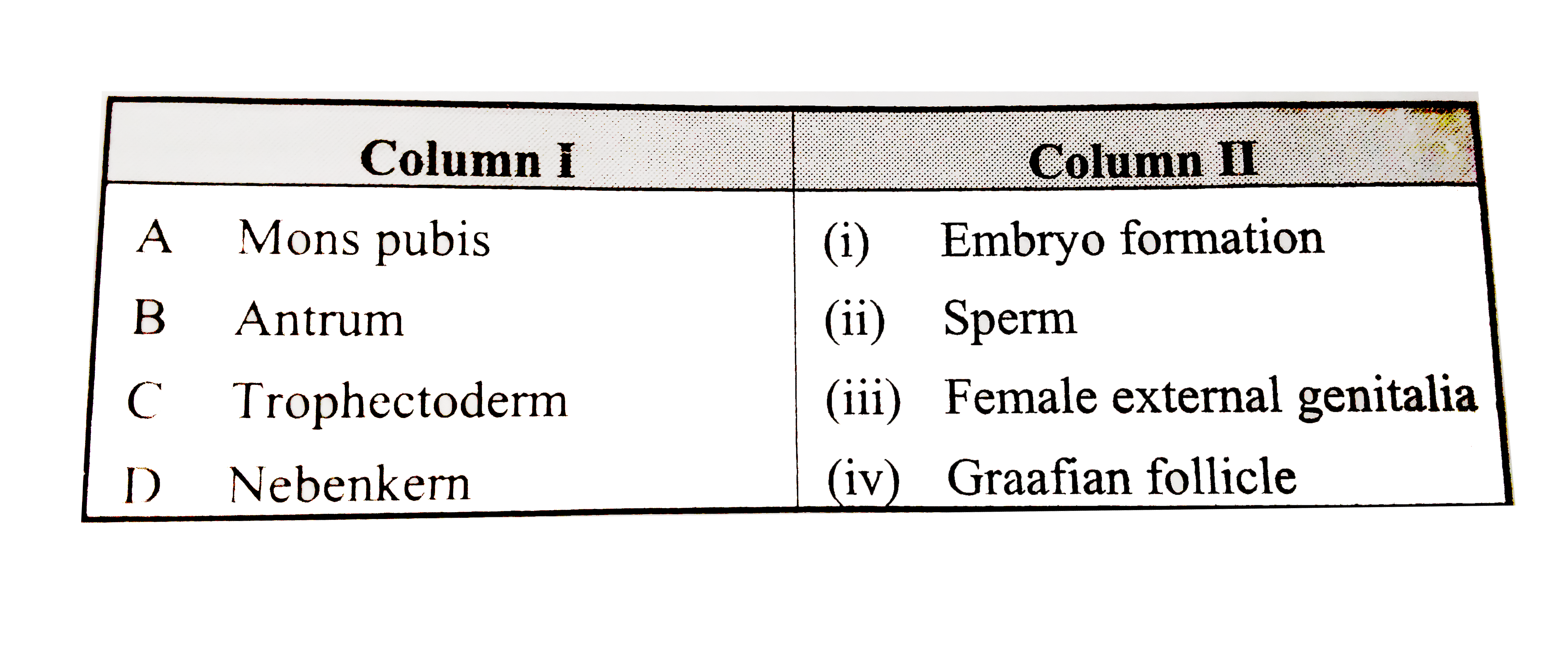
View SolutionMatch Column - I with Column -II and select the correct option using the codes given below
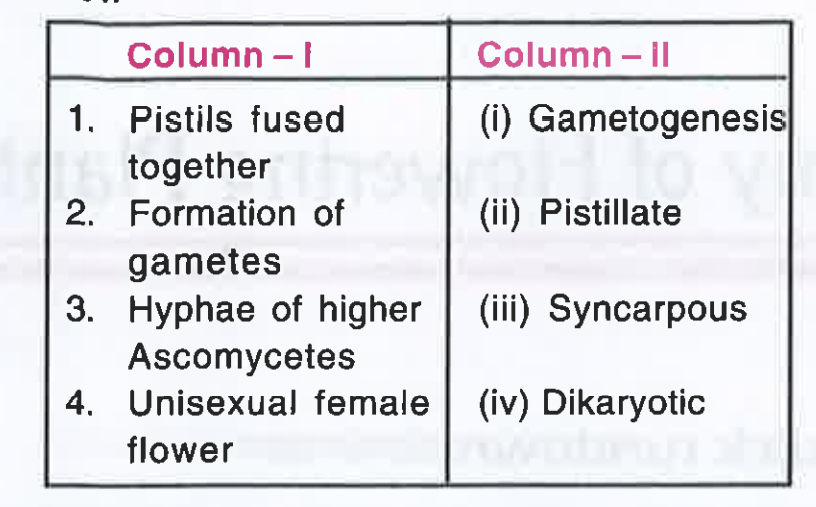
View SolutionMatch the Column I with Column II and choose the correct option from the codes given below.
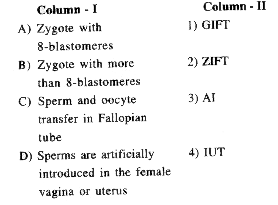
View Solution
